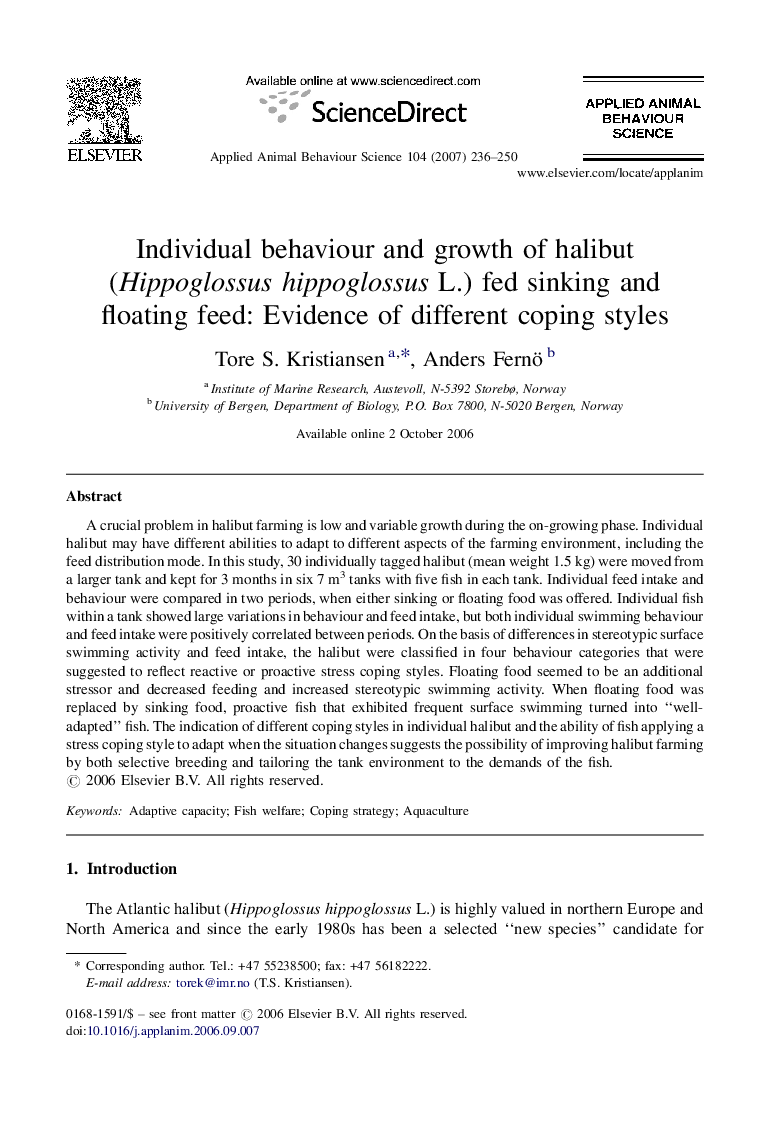| کد مقاله | کد نشریه | سال انتشار | مقاله انگلیسی | نسخه تمام متن |
|---|---|---|---|---|
| 4523956 | 1625433 | 2007 | 15 صفحه PDF | دانلود رایگان |

A crucial problem in halibut farming is low and variable growth during the on-growing phase. Individual halibut may have different abilities to adapt to different aspects of the farming environment, including the feed distribution mode. In this study, 30 individually tagged halibut (mean weight 1.5 kg) were moved from a larger tank and kept for 3 months in six 7 m3 tanks with five fish in each tank. Individual feed intake and behaviour were compared in two periods, when either sinking or floating food was offered. Individual fish within a tank showed large variations in behaviour and feed intake, but both individual swimming behaviour and feed intake were positively correlated between periods. On the basis of differences in stereotypic surface swimming activity and feed intake, the halibut were classified in four behaviour categories that were suggested to reflect reactive or proactive stress coping styles. Floating food seemed to be an additional stressor and decreased feeding and increased stereotypic swimming activity. When floating food was replaced by sinking food, proactive fish that exhibited frequent surface swimming turned into “well-adapted” fish. The indication of different coping styles in individual halibut and the ability of fish applying a stress coping style to adapt when the situation changes suggests the possibility of improving halibut farming by both selective breeding and tailoring the tank environment to the demands of the fish.
Journal: Applied Animal Behaviour Science - Volume 104, Issues 3–4, May 2007, Pages 236–250